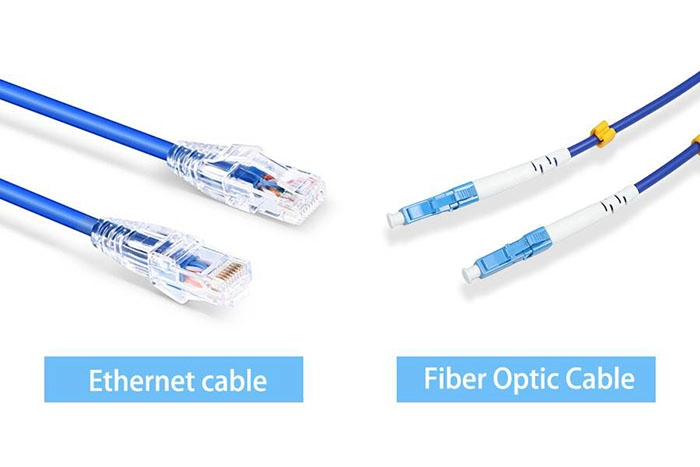
Blog
blog Location: Home > Blog > Technical Article
Location: Home > Blog > Technical Article
 Update Time:2025-08-07
Update Time:2025-08-07 Traffic:
Traffic: 
This article focuses on 6 Strand Fiber Optic Cable, highlighting its durability and high-capacity features. It explores its applications, advantages, and why it is a popular choice in the networking field.
The 6 Strand Fiber Optic Cable – Durable and High-Capacity has emerged as a crucial component in modern networking infrastructure. In today's digital age, where data transfer speed and reliability are of utmost importance, this type of fiber optic cable offers unique advantages.
Fiber optic cables have revolutionized the way we transmit data, providing faster and more reliable connections compared to traditional copper cables. Among the various types of fiber optic cables available, the 6 strand fiber optic cable stands out for its specific characteristics. It is designed to meet the growing demands of data - intensive applications in both commercial and residential settings.
The 6 strand fiber optic cable comes with several notable features that make it a preferred choice for many network installers and users.
One of the most significant features of the 6 strand fiber optic cable is its durability. It is constructed with high - quality materials that can withstand harsh environmental conditions. Whether it is extreme temperatures, humidity, or physical stress, the cable maintains its integrity. For example, the outer jacket is made of a tough material that protects the delicate fiber strands inside from damage. This durability ensures long - term performance and reduces the need for frequent replacements, saving both time and money in the long run. Additionally, the cable is resistant to electromagnetic interference, which further enhances its reliability in various networking environments.
The high - capacity feature of the 6 strand fiber optic cable is another major advantage. With six individual strands, it can carry a large amount of data simultaneously. This makes it suitable for applications that require high - speed data transfer, such as large - scale data centers, high - definition video streaming, and cloud computing. Each strand can be used for different data channels or redundant connections, providing flexibility in network design. For instance, in a data center, the 6 strand fiber optic cable can support multiple servers and storage systems, ensuring smooth data flow between them. It can also handle the increasing bandwidth requirements of emerging technologies like 5G and the Internet of Things (IoT). Wikipedia provides more in - depth information about fiber optic cables in general.
The 6 strand fiber optic cable has a wide range of applications. In the telecommunications industry, it is used for long - distance data transmission between telephone exchanges and cell towers. In the corporate world, it is employed to connect different departments within a large office complex, enabling seamless communication and data sharing. In residential areas, it can be used for high - speed internet access, providing users with a fast and stable connection for online activities such as gaming, video conferencing, and streaming. Additionally, it is used in the medical field for applications like remote patient monitoring, where real - time data transfer is crucial.
There are several benefits associated with using the 6 strand fiber optic cable. Firstly, its durability means lower maintenance costs over time. Since it can withstand various environmental factors, there is less chance of damage, reducing the frequency of repairs or replacements. Secondly, the high - capacity feature allows for future - proofing of networks. As data requirements continue to grow, the cable can accommodate the increased load without significant upgrades. Thirdly, the cable offers high - speed data transfer, improving overall network performance. This is especially important for businesses that rely on quick data access for decision - making processes. Finally, its resistance to electromagnetic interference ensures clean and error - free data transmission, enhancing the quality of the network connection.
Q1. What makes the 6 strand fiber optic cable more durable than other cables?
A: It is constructed with high - quality materials for the outer jacket and has a design that protects the inner fiber strands from environmental factors like temperature, humidity, and physical stress. It is also resistant to electromagnetic interference.
Q2. How much data can the 6 strand fiber optic cable carry?
A: With six individual strands, it can carry a large amount of data simultaneously, making it suitable for high - speed data transfer applications such as data centers and video streaming.
Q3. Where is the 6 strand fiber optic cable commonly used?
A: It is used in telecommunications for long - distance data transmission, in corporate offices for internal network connections, in residential areas for high - speed internet, and in the medical field for applications like remote patient monitoring.
Q4. Does the 6 strand fiber optic cable require special installation?
A: While it does require some technical expertise for installation, especially when it comes to terminating the fiber strands, it can be installed by trained professionals following standard procedures.
Q5. How does the 6 strand fiber optic cable contribute to network future - proofing?
A: Its high - capacity feature allows it to handle the increasing data demands of future technologies such as 5G and IoT, reducing the need for frequent network upgrades in the near future.
